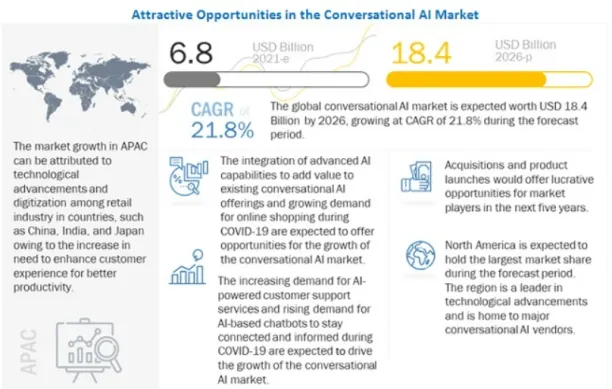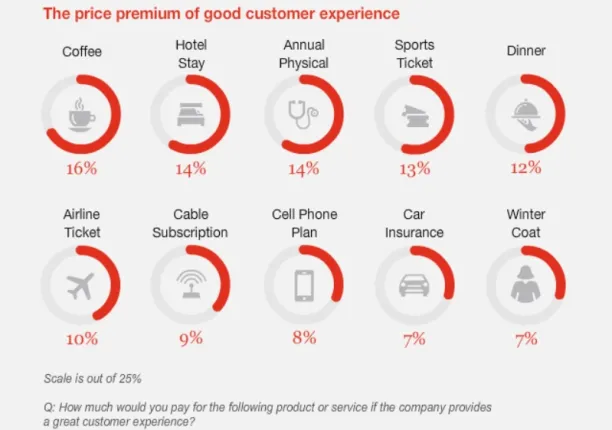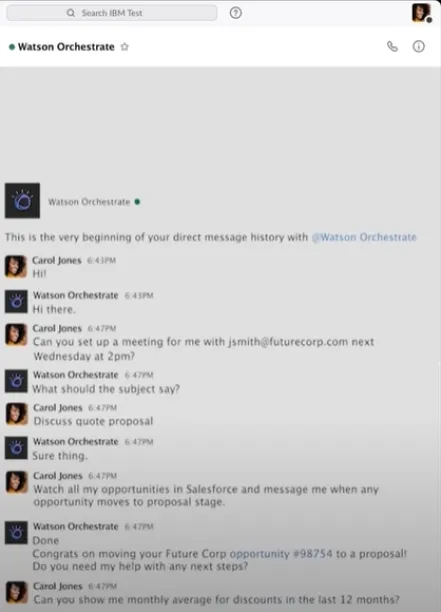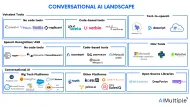Top 5 Expectations Concerning the Future of Conversational AI
The attitudes of customers and business professionals regarding conversational AI tools like chatbots and intelligent virtual assistants (IVAs) have been changing rapidly as a result of advances in natural language processing (NLP) and natural language understanding (NLU).
For instance, Accenture discovered that nearly 80% of CEOs now want to invest in conversational AI to change their customer relationship strategy. Organizations can also use conversational AI driven no-code automation tools called digital workers to streamline a variety of corporate activities (e.g hiring).
This article explains the expectations regarding the future of conversational AI in a data driven way. We will also provide recommendations for business professionals to guide them how you can integrate this technology into your workflow.
1. Chatbot market will continue to expand
The conversational AI industry was estimated to be worth $6.8 billion in 2021. Figure 1 shows that the market is anticipated to grow at a CAGR of more than 21% and reach a value of over $18 billion in 2026.
Figure 1: Conversational AI market size.

According to the same report. The North America region is the largest conversational AI market size where most of the biggest chatbot companies are located.
Report also indicates that the main two reasons behind the fast growth of conversational market as:
- Many companies are needed to conduct business remotely as a result of pandemic restrictions so the Covid-19 pandemic has generally had a positive impact on spending on digital technologies.
- Investments of competitors force other companies to adapt conversational AI technologies to remain competitive.
- Customers expect fast and personalized customer care and their expectations force companies to invest in conversational AI which are capable of delivering that.
2. More chatbots will be deployed on messaging apps
Messaging apps chatbots will be an significant part of the future of conversational AI. According to PwC, customers are willing to pay more up to 16% if the branding strategy and customer service of the company is engaging and easy to communicate with (see Figure 2).
Ease of communication means messaging apps to reach a wider audience. More than half of messaging apps users (which make a few billion people) say if companies directly reach them via messaging apps their chance of purchasing goods/services increase.
Figure 2: Customers are willing to pay more for effective customer engagements.

Businesses became aware of this eCommerce trend and positioned themselves to meet client needs. In order to facilitate contact with customers, they started their conversational commerce initiative, which intends to locate businesses’ customer interaction tactics on messaging platforms like WhatsApp, Facebook Messenger, WeChat, and others.
Due to customer demand, AIMultiple expects that more organizations will deploy chatbots on messaging apps.
Further Readings for conversational commerce
- If you wonder about conversational commerce use cases you can read our 10 Conversational Commerce Use Cases for Different Industries article.
- You can also read our article on the Top 5 Conversational Commerce Examples & Success Stories if you are interested in learning more about conversational commerce success stories.
- To find the best conversational commerce platforms you can read our Conversational Commerce Platforms: Data-driven Benchmarking.
3. Digital workers will support human workforce
Digital workers, also known as digeys, are intelligent automation tools. The purpose of digeys is to augment your workforce by performing tasks that would generally be done by junior employees.
Like their human peers, they have:
- A certain professional identity,
- A particular business unit to work in,
- A certain degree of authority,
- And access to business technologies like ERP, CRM, and financial automation systems.
Employees can communicate with digeys through their conversational AI features. As seen in the Figure 4, employees can use workplace communication tools such as Slack to make digital workers to automate many tasks such as:
- Organizing calendars.
- Drafting emails.
- Updating business data.
- Extracting and interpreting data from databases and cloud tools.
- Entering data into cloud tools and databases and more.
Today, digital workers are new technologies only a few business professionals are aware of. However, due to digeys automation capabilities and their engaging nature thanks to conversational AI we expect them to proliferate soon.
Particularly during Great Resignation, more than 70% of CEOs said that finding and keeping qualified employees is their top concern. We expect digital workers to be a combating strategy with historically high levels of resignations due to their automation capabilities.
Figure 4: How people communicate with digital workers.

4. Intent recognition will differentiate the quality of bots
According to PwC, around 30% of people are willing to pay more for the personalized recommendations. To make personalized recommendations, bots should grasp the meaning of the conversations at a high level.
Therefore, a simple rule-based chatbot that is designed to answer frequently asked questions will not bring significant competitive advantage in the era of conversational commerce. Companies need chatbots that understand user intent.
AI-driven chatbots can:
- Understand conversations to a high degree.
- Ask users questions to understand their preferences and needs.
- Provide product information to users.
- Assess product catalog of company to recommend the most suitable product to specific customer.
5. Multimodal design will increase
In 2021, there were more than 120 million voice assistants in the US alone, and that figure is continuing to rise. We predict that as the numbers increase, voice searches will become more prevalent in online transactions.
Such a paradigm will force eCommerce companies to design multimodal conversational AI tools which can respond to both text and voice. Therefore, AIMultipe expects a rise in the multimodal chatbot designs.
If you are interested in NLP driven technologies futures, you can also read our Top 5 Expectations Regarding the Future of NLP article.
Finally, if you have further questions regarding the future of conversational AI you can reach us:

Cem has been the principal analyst at AIMultiple since 2017. AIMultiple informs hundreds of thousands of businesses (as per similarWeb) including 60% of Fortune 500 every month.
Cem's work has been cited by leading global publications including Business Insider, Forbes, Washington Post, global firms like Deloitte, HPE, NGOs like World Economic Forum and supranational organizations like European Commission. You can see more reputable companies and media that referenced AIMultiple.
Throughout his career, Cem served as a tech consultant, tech buyer and tech entrepreneur. He advised businesses on their enterprise software, automation, cloud, AI / ML and other technology related decisions at McKinsey & Company and Altman Solon for more than a decade. He also published a McKinsey report on digitalization.
He led technology strategy and procurement of a telco while reporting to the CEO. He has also led commercial growth of deep tech company Hypatos that reached a 7 digit annual recurring revenue and a 9 digit valuation from 0 within 2 years. Cem's work in Hypatos was covered by leading technology publications like TechCrunch and Business Insider.
Cem regularly speaks at international technology conferences. He graduated from Bogazici University as a computer engineer and holds an MBA from Columbia Business School.
To stay up-to-date on B2B tech & accelerate your enterprise:
Follow on

Comments
Your email address will not be published. All fields are required.